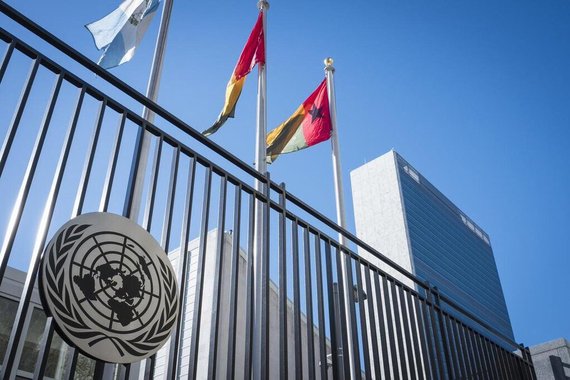Today, April 22, 2016, marks a key moment for the world with the signing of the historic Paris climate change agreement. A record number of world leaders are expected in New York at the United Nations Headquarters for the high-level signing ceremony. It's a clear sign that people recognize that the changing climate is impacting us now - the recent record-breaking temperature, spread of infectious diseases, and climatic conditions, are increasingly alarming and must be dealt with before it's too late. Now is the time for action and for countries and governments to deliver on their promises made in Paris.
I've answered some questions that will better help explain why the signing of the Paris Agreement is critical and how we in the World Bank Group are stepping up our efforts to help countries deliver on their pledges.
Q1: Why is it important that countries sign the Paris Agreement on April 22? What does this mean for the world?
Paris was a historic occasion. The negotiators have now done their jobs and in New York countries will now sign on to the agreement in order to put it into force. The important thing now is to act. We are already seeing the impact of climate change on people around the world and we know that it is only going to get worse in the coming years. If we don't act both in terms of building resilience and keeping global emissions below 2 degrees Celsius we will see more than 100 million people falling back into poverty. The World Bank is now working very closely with its countries to respond to the ambitious goals that they have put in place.
Q2: What is the World Bank doing to help countries meet the pledges they made in Paris?
We've committed to increase our financing for climate activities by one third to about 29 billion dollars a year by 2020. To do this we've put into place a climate action plan that puts climate activities at the heart of our development programs and our support to countries. Through this plan we will be providing renewable energy for 150 million more people. We will be working to put in place early warning systems for another 100 million people and we will be working with countries to implement climate smart agriculture activities, such as seeds that can respond to different climatic conditions and improved irrigation, to ensure that we're able to feed people in the future in the face of climate changes and also with lower carbon emissions.
Q3: What's the role of putting a price on carbon pollution?
Putting a price on carbon pollution will help drive incentives investments towards renewable energy. It will result in health benefits for populations and it will generate revenues for governments that will allow them to invest in climate smart activities such as increased resilience or more renewable energy.
Q4:The World Bank Group just released its Climate Action Plan, what's next?
In our view there are three things that are important going forward. Implementation, implementation and implementation but it is also clear that no one organization can do this alone so we are focusing on building partnerships so that we can work with other organizations such as multilateral development banks, the Green Climate Fund, nongovernmental organizations and think tanks so we can get better impact as a whole by coordinating our activities. It is also very important to crowd in private sector investments in financing for climate change activities. So we will be working on creating the policy environment that allows the private sector to invest but also taking initiatives to reduce the risk for private sector such as guarantees on renewable performance and putting in place mechanisms to spread the risk for the private sector to invest in renewable energy and climate smart agriculture.
